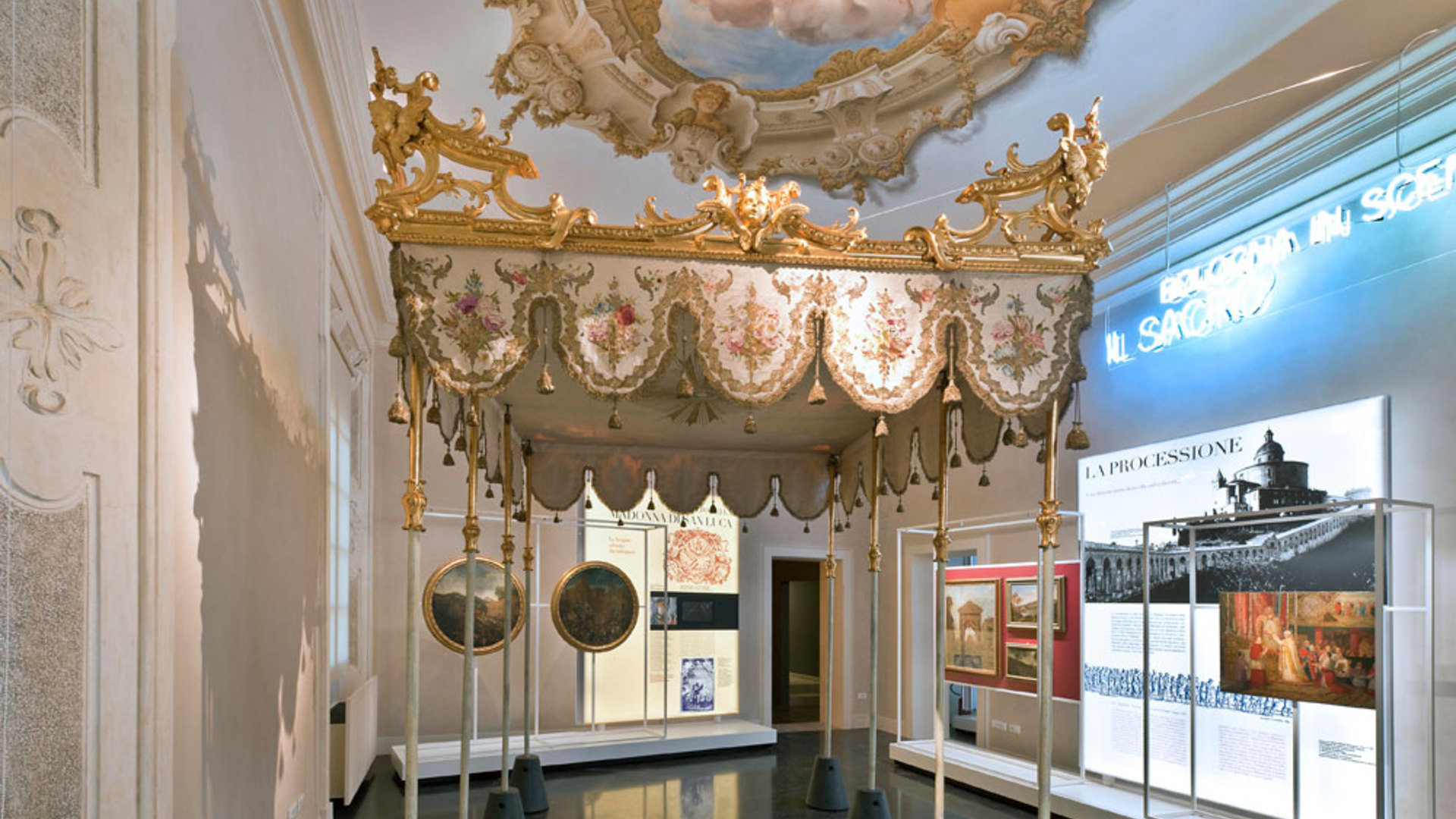PALAZZO PEPOLI – MUSEO DELLA STORIA DI BOLOGNA
City: BOLOGNA
|Year: 2012
|Status: Completed
The work done concerns both the architectural project of transforming and renovating the palazzo as well as the exhibition design for the works on display. The architect carries out his work inside the building.
“Inside, in the heart of the Palazzo, an umbrella tower of glass and steel reinvents the courtyard which thus reacquires dignity and function – Bellini explains –. It looks like a magic lantern flooded from above with natural white light that descends and is dematerialised into pure transparency. Almost an epiphany that makes one reflect on the passing of time”.
The new glass structure of the umbrella tower in the courtyard is juxtaposed with the massively thick layout of the existing building and makes the entire visiting itinerary fluid, taking the tower and the courtyard as its epicentre. The architectonic gesture of the tower is decisive, but it also strategically resolves the need for a fluid and interesting exhibition itinerary.
The exhibit design confirms Bellini’s ability to enhance existing structures according to principles now consolidated in his work.
“A museum of the city and for the city, designed – as in all my works for exhibitions – Bellini remembers – by respecting (and separating) the container and the content in order to enhance, in mutual autonomy, the meaning and beauty of both”.
“The main elements of the exhibition design are larger containers – it seems reductive to define them as display cases, they have, rather, the flavour of out of scale metaphysical objects that recall de Chirico – placed in the rooms according to their own rhythms and with a different geometry compared to those of the rooms themselves and of their sequence”.
Inside these large transparent structures, the works on display are framed by three-dimensional cages that define for each work a space of its own, moreover allowing for excellent lighting, with miniature LED technology.
Photo credits: Francesco Radino












